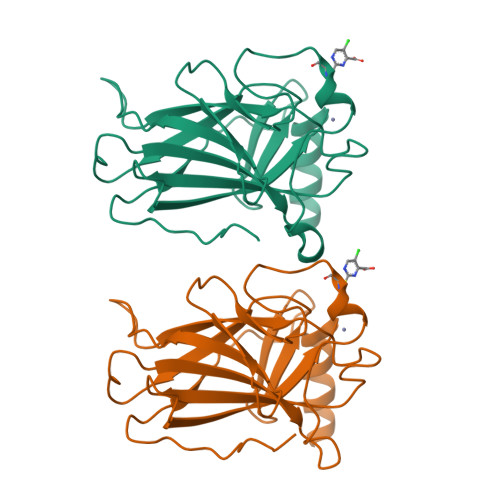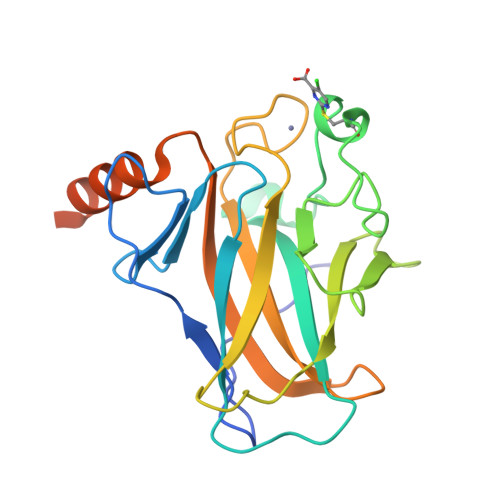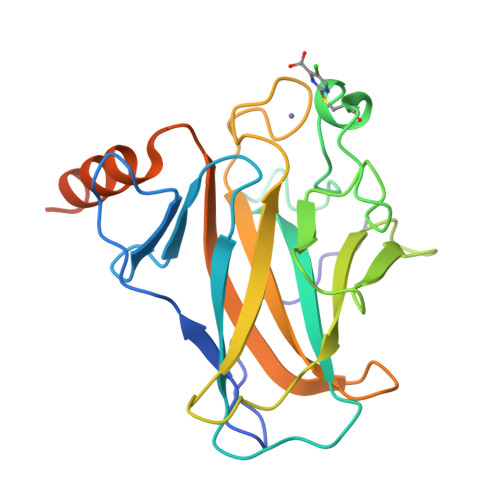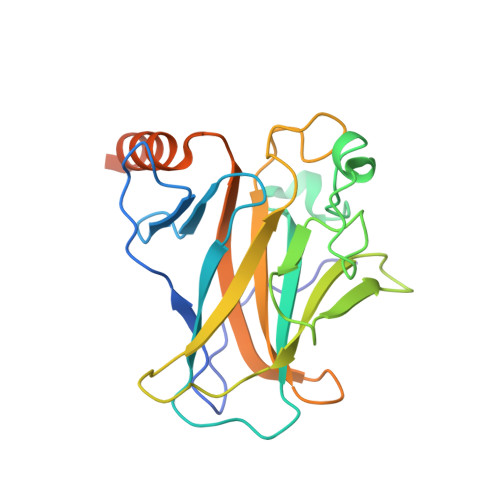2-Sulfonylpyrimidines: Mild alkylating agents with anticancer activity toward p53-compromised cells.
Bauer, M.R., Joerger, A.C., Fersht, A.R.(2016) Proc Natl Acad Sci U S A 113: E5271-E5280
- PubMed: 27551077
- DOI: https://doi.org/10.1073/pnas.1610421113
- Primary Citation of Related Structures:
5LAP - PubMed Abstract:
The tumor suppressor p53 has the most frequently mutated gene in human cancers. Many of p53's oncogenic mutants are just destabilized and rapidly aggregate, and are targets for stabilization by drugs. We found certain 2-sulfonylpyrimidines, including one named PK11007, to be mild thiol alkylators with anticancer activity in several cell lines, especially those with mutationally compromised p53. PK11007 acted by two routes: p53 dependent and p53 independent. PK11007 stabilized p53 in vitro via selective alkylation of two surface-exposed cysteines without compromising its DNA binding activity. Unstable p53 was reactivated by PK11007 in some cancer cell lines, leading to up-regulation of p53 target genes such as p21 and PUMA. More generally, there was cell death that was independent of p53 but dependent on glutathione depletion and associated with highly elevated levels of reactive oxygen species and induction of endoplasmic reticulum (ER) stress, as also found for the anticancer agent PRIMA-1(MET)(APR-246). PK11007 may be a lead for anticancer drugs that target cells with nonfunctional p53 or impaired reactive oxygen species (ROS) detoxification in a wide variety of mutant p53 cells.
Organizational Affiliation:
Medical Research Council Laboratory of Molecular Biology, Cambridge CB2 0QH, United Kingdom;



















